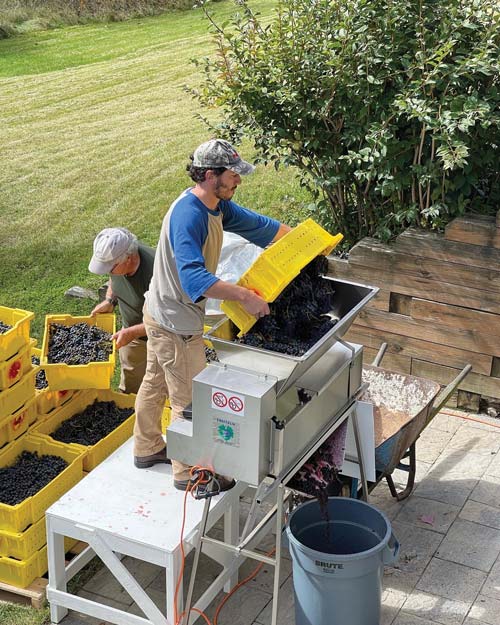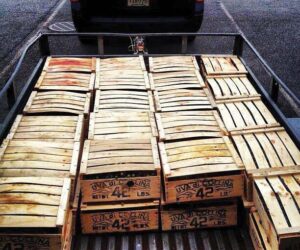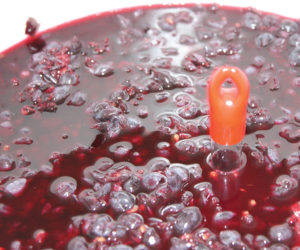For fresh grape winemakers, the task of crushing the grapes is generally going to be the first task on the list after the grapes have been received and inspected for damage. Most winemakers would highly recommend that specialty equipment is used, but that shouldn’t stop those on a budget because there are workarounds. Before we dive in here about crushing grapes, it’s important to note that while it is generally recommended that winemakers crush their grapes after they are received, it is not always a necessary task.
Is Crushing Necessary?
The benefit of crushing is primarily to allow access to the juice inside the grape skins. For reds you want this exposure so that the yeast can access the juice and for the skins to macerate during fermentation. For whites and rosé wines, crushing can allow for easier pressing to extract the grape juice into a fermenter.
But there are a couple instances where grapes can be left uncrushed such as in whole cluster winemaking and when a winemaker is looking to perform a carbonic maceration. In the case of whole cluster winemaking for white and rosé wines, it implies the grape clusters go directly to the press with their stems and skins still intact. This means the juice will have almost zero time to extract compounds from the skins before being run off. The goal of this technique is to produce a delicate wine with very low astringency. Unfortunately for home winemakers, the standard ratcheting basket press does not have the necessary pressure to press whole cluster grapes in this manner. This method can be done at home with a bladder press.
Carbonic maceration is a specialized way to produce very fruity, early drinking red wines, such as seen in Beaujolais nouveau style of wines. In this situation whole clusters of red grapes are purged of oxygen and enzymatic fermentation is allowed to commence within the berries. Eventually the grape skins burst and then the wine can be pressed. This is a very niche technique and should not be employed unless a deep dive has been done into the process and what it produces in the finished wine.
Ways To Crush

We’re going to look at three of the most popular ways that home winemakers can get their grapes crushed: Hand crushing, using a mechanical crush, and using a crusher/destemmer. The initial equipment cost goes up as we move along that list with the crusher/destemmer being the most convenient but also garnering the highest price tag, especially models that feature an electric motor to turn grinding wheels as opposed to hand crank-driven models.
Hand crushing is the cheapest to set up but requires plenty of muscle and can get pretty messy. It can be performed on a large stainless steel screen, a screen that you feel comfortable leaning some weight into as you’ll be smushing the grapes through the screen and into your fermentation bucket in the case of reds or a settling bucket in the case of whites and rosés. (Technical Editor Bob Peak also mentioned that milk crates are another tool that can be used to crush the grapes.) Stems preferably will be sorted out with this technique and this method is perfect for small-scale, 5 gal. (19 L) and under, batches.
If hand crushing (or even the classic foot stomping) doesn’t appeal to you, then it’s time to consider your options with either a mechanical crusher model or a crusher/destemmer.
A mechanical crusher can be built at home by those with some engineering chops. But most winemakers opt to purchase (or rent) one through a wine supplier. Models that offer destemming capabilities are more expensive, so why might you invest? Stems can provide a lot of small polyphenolic compounds (providing astringency and bitterness to wine) if left in contact with the juice, such as in red winemaking.
The Stem Factor
For white and rosé wines, it’s perfectly fine to leave the stem with the grapes and juice since it will see the press quickly and those polyphenolic compounds won’t have time to get extracted. But for red wines, just how ripe the stems are does have an impact on the characteristics it will impart on the wine. Green stems will provide a more herbaceous and vegetal character while brown, lignified stems provide more spicy, black tea character. Being able to control when to include a little or a lot can be useful.
If doing small-batch winemaking (5 to 10 gal./20 to 40 L), destemming can be done by hand. But for those that are looking to grow their hobby and do larger batch sizes, especially with red winemaking, you should consider spending the money on the destemmer option. Stems can always be added back after being removed.
Crushing Options
While it would be nice if more commercially available hobby crushers offered adjustable gap spacing, there are ways to play around with your crush even with fixed rollers. Just as it was earlier mentioned that winemakers don’t have to crush, there are ways to play around with the percentage of grapes you crush.
You may want to try crushing 80% of the grapes for a Burgundian-style wine and leave the remaining 20% intact to undergo carbonic maceration to enhance the fruitiness. For white wines, maybe just crushing 50% of the grapes to minimize skin exposure for a Pinot Gris. There are no set rules, just options.






